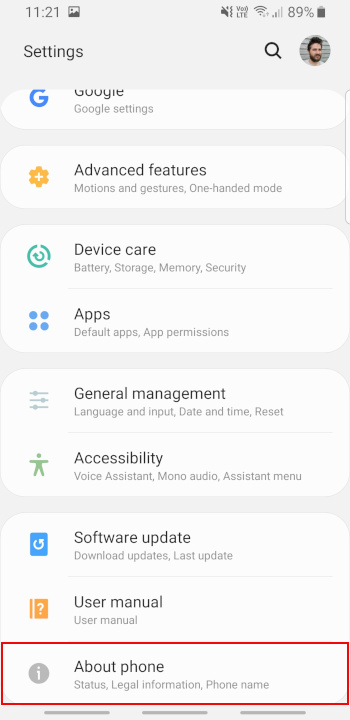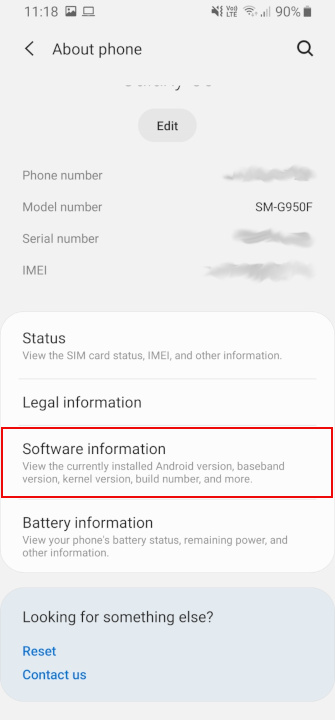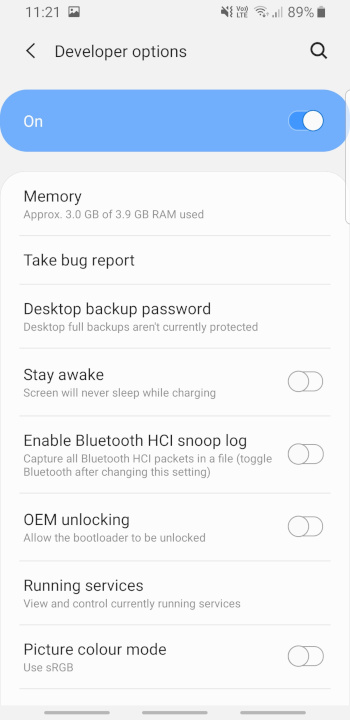Android rooting is the ideal way to get more control over your smartphone, opening up a world of unknown possibilities, but it’s important to approach it with caution. Rooting isn’t without its risks — and if something goes wrong, it can void your warranty, leave you with a broken smartphone or tablet, or worse.
- What is rooting?
- Why root Android phones?
- Why wouldn’t you root?
- How to prepare your Android device for rooting
- Start here before rooting Android devices
- Installing the Android SDK Platform Tools
- Installing device drivers
- Unlock your bootloader
- How to root your Android device with multiple programs
- Resources you will need after you root
- How to unroot your Android device
Before proceeding, it is important to understand that rooting is not always a straightforward process, and you may encounter hiccups along the way. If you decide that you absolutely need to root your Android device, continue below, but know that it isn’t for the faint of heart or technology-inexperienced.
Manufacturers and carriers will dissuade you from rooting, and they aren’t just scaremongering. If you don’t follow instructions properly, the worst-case scenario can irreparably damage your device, but many people feel that the potential benefits are well worth it. With a rooted phone, you can remove bloatware, speed up your processor, and customize every element of your phone software’s appearance.
This guide on how to root
See more
- Best root apps for rooted Android phones and tablets
- Best Android Phones
- Best Android 10 tips and tricks
What is rooting?
Rooting an
Rooting is best undertaken with caution. You must back up your phone’s software before installing — or “flash,” in rooting terms — a custom ROM (a modified version of
Why root Android phones?
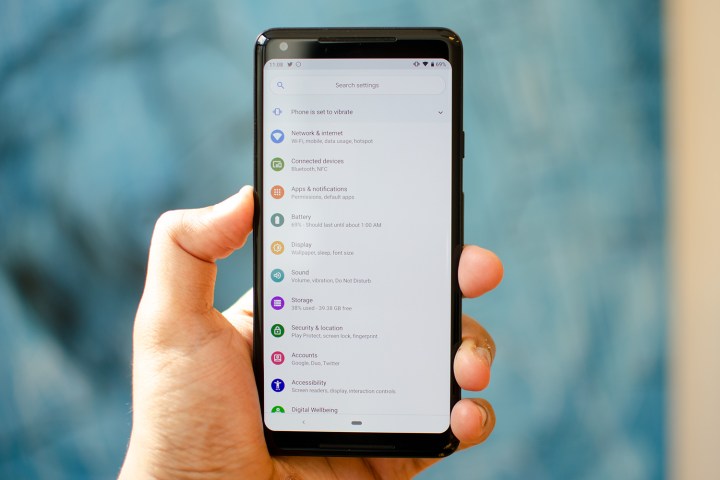
One of the biggest incentives to root your
There isn’t an overabundance of must-have root apps, but there are enough to make it worthwhile. Some apps will let you automatically back up all of your apps and data to the cloud, block web and in-app advertisements, create secure tunnels to the internet, overclock your processor, or make your device a wireless hot spot. Look at the best root apps for rooted devices for a better idea of what is possible.
Why wouldn’t you root?
There are essentially four potential cons to rooting your
- Voiding your warranty: Some manufacturers or carriers will void your warranty if you root your device, so it is worth keeping in mind that you can always unroot. If you need to send the device back for repair, simply flash the software backup you made, and it’ll be good as new.
- Bricking your phone: If something goes wrong during the rooting process, you risk bricking — i.e., corrupting — your device. The easiest way to prevent that from happening is to follow the instructions carefully. Ensure the guide you are following is up to date and that the custom ROM you flash is specifically for your phone. If you do your research, you won’t have to worry about bricking your smartphone.
- Security risks: Rooting introduces some security risks. Depending on what services or apps you use on your device, it could create a security vulnerability. And certain malware takes advantage of rooted status to steal data, install additional malware, or target other devices with harmful web traffic.
- Disabled apps: Some security-conscious apps and services do not work on rooted devices — financial platforms like Google Pay and Barclays Mobile Banking do not support them. Apps that serve copyrighted TV shows and movies, like Sky Go and Virgin TV Anywhere, will not start on rooted devices, either — and neither will Netflix.
How to prepare your Android device for rooting
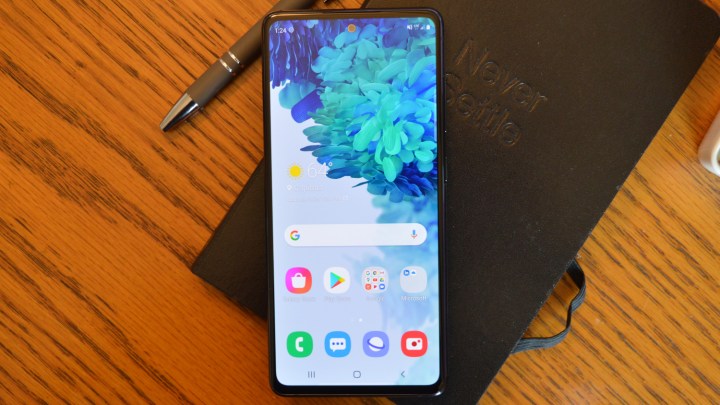
One of the easiest ways to root an
It used to be that rooting
If your phone isn’t compatible with a one-click rooting app, you must spend a little time researching alternatives on
Start here before rooting Android devices
Back up everything you cannot live without before you start. You should also always back up your phone’s current ROM before you flash a new one. You will also want to ensure that your device has a full charge before you begin.
You will need to turn on USB Debugging and OEM Unlocking. Do this by opening Settings on your device. If you do not see Developer Options toward the bottom of the Settings screen, follow these steps to activate it.
- Tap on About Phone and find the Build Number. The exact path depends on your phone, but it’ll usually be found with other software information.
- Tap on the Build Number seven times, and the Developer Options will appear on the Settings main page. You may need to confirm your security passcode to enable this.
- Tap on the Back key to see your new developer options.
- Tap Developer Options.
- Check to enable USB Debugging.
- Check to enable OEM Unlocking.
Installing the Android SDK Platform Tools
Rooting used to involve downloading Google’s entire
Download and install the
Installing device drivers
To ensure your computer can properly communicate with your
Devices from some manufacturers come with the drivers included in the phone’s software, so all you need to do to install the appropriate USB driver is attach your phone to your PC by USB cable. OnePlus is an example of this, but it’s worth connecting your phone first to see whether USB drivers will automatically install.
Otherwise, here is a list of drivers from the most popular manufacturers:
Asus
Acer
- Alcatel
- Coolpad
- Google/Nexus/Pixel
HTC
Huawei/Honor
- Lenovo/Motorola
LG
Samsung
Follow the installer’s instructions. Once the drivers are installed, proceed to the next step.
Unlock your bootloader
Before you get started, you need to unlock your device’s bootloader. The bootloader, simply put, is the program that loads the device’s operating system. It determines which applications run during your phone or tablet’s startup process.
Some manufacturers require you to get a key to unlock the bootloader. Motorola, HTC, and LG provide step-by-step instructions on how to do so, but a word of warning: They require you to register for a developer account.
Unfortunately for users of Huawei and Honor devices, those phones’ bootloaders can no longer be unlocked. Huawei rescinded the ability to request unlock codes in July 2018. If you still want to root your Huawei or Honor device, you must use a third-party service like DC-Unlocker.
Once you have taken those steps, you can embark on the unlocking process. You will need to put your device in fastboot mode. It’s different for every phone, but on most devices, rebooting the device and holding down the Power and Volume Down buttons for 10 seconds does the trick (HTC phones require that you hit the Volume Down key and press the Power button to select it).
Once you have booted into fastboot, head to the folder you previously unzipped your
Unlock your device’s bootloader by connecting it to your computer and placing it in fastboot mode again. Pull up the command prompt by typing cmd into your Start menu.
For Google Nexus and Pixel devices, the commands are easy:
- Nexus phones: Type “fastboot oem unlock” (without quotes) and hit Enter.
- Pixel phones: Type “fastboot flashing unlock” (without quotes) and hit Enter.
It’s the same for Samsung devices:
- Samsung phones: Type “fastboot flashing unlock” (without quotes) and hit Enter.
Motorola’s command is a little different:
- Type “oem unlock UNIQUE_KEY” (without quotes), replacing “UNIQUE KEY” with the code you received
So is HTC’s:
- Type “unlocktoken Unlock_code.bin” (without quotes), replacing “Unlock_code.bin” with the file you received.
Confirm the unlock, and you’re one step closer to rooting your
Some manufacturers and carriers don’t sanction bootloader unlocking, but that doesn’t mean it can’t be done. Try searching the XDA Developers forum for workarounds and unofficial solutions.
How to root your Android device with multiple programs
There are a lot of different ways to root your phone or tablet. Here are a few of our favorites.
Rooting with Root Master

The XDA Developers forum mentions Root Master as one of the best one-click root methods — and it’s simple for beginners to use. It’s worth noting, though, that Root Master hasn’t updated since 2017. If you decide to use this app, here are the steps to follow:
- Download and install the APK. You may need to tap the Unknown Sources button in your Android Security settings to complete the installation.
- Launch the app, then tap Start.
- The app will let you know if your device is compatible. If it isn’t, you must try one of the other apps on our list.
- If you can root your device, proceed to the next step, and the app will begin rooting. This may take some time, and it’s a good idea to try not to use your phone for anything else while it’s running.
- Once you see the Success screen, restart your device, and you’re done!
- Once it’s finished, you can download and run Magisk to manage your root access.
Rooting your Android device with Firmware.mobi
Firmware.mobi, an unlocking utility by developer Chainfire, isn’t the easiest way to root your
You will need to download the ZIP file intended for your device.
Once you have done that, follow these steps:
- Extract the folder.
- Navigate to it and find the root-windows.bat file. Double-click it.
- Wait for the script to execute, and press any key.
- When the process is complete, your phone will automatically reboot, and it will root you.
Rooting your Android device with BaiduRoot
BaiduRoot, a software utility by Beijing-based Baidu Inc., supports over 6,000
BaiduRoot is one of the more straightforward rooting applications. Once you’ve downloaded it on your computer, it’s a step-by-step affair.
First, you must unzip the file. Find Baidu_Root.RAR and extract its contents (if you’re using Windows, you might need a third-party application like 7-Zip).
Next, attach the device you want to root to your computer via USB and transfer the files. Once that’s done, unplug your phone.
You must install the BaiduRoot application manually. Follow these steps:
- On your smartphone or tablet, head to Settings > Security (or Lock Screen and Security).
- Toggle Unknown Sources, and press OK on the pop-up.
- Find the folder containing the BaiduRoot app and tap the APK file. Follow the instructions to complete the installation.
Now, switch to BaiduRoot:
- Open BaiduRoot and accept the license agreement.
- Tap the Root button in the center of the screen.
- After a few seconds, you’ll get a message showing that the device successfully rooted.
Here’s a video showing the installation process.
Rooting with One Click Root

One Click Root is a new rooting tool that aims to reduce the complicated nature out of rooting. The idea of One Click Root is right there in the name: One click, and you’re done. It charges $40 to root your phone and promises that the program won’t be able to brick your phone, except with user negligence. We can’t back up those claims, so we recommend taking all the same precautions you would take with any other rooting app.
The One Click Root procedure is simple:
- Check that your device is supported by the Root Availability Tool.
- Download the Windows/Mac One Click Root program.
- Connect your device via USB cable.
- Enable USB debugging on your device.
- Run One Click Root and let the software handle the tricky bit.
How to use Kingo Android Root
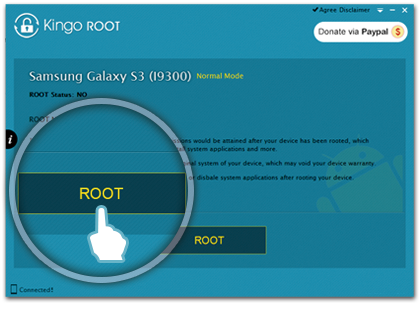
Kingo Root can install on a Windows-based computer or directly to the device you want to root. First, check to see if your device is compatible with Kingo by checking the official list. Then, grab the Kingo Android Root for Windows program, and install it. Alternatively, download the Kingo Android Root APK to your device, check the Unknown Sources box (see above), and install it.
If you’ve opted to use the Windows client, ensure to enable USB Debugging mode on your phone.
From there, usage is pretty simple:
- Launch Kingo Root on your computer and connect your device via USB.
- Kingo Root should detect your device automatically and prompt you to root it. Click Root, and then hang tight — Kingo will only take a few minutes to grant root privileges.
If you would rather root without a computer, follow these instructions:
- Install the Kingo Root APK.
- Open the Kingo Root app.
- If your device is compatible, you will see a One Click Root button. Tap it and be patient — it can take a while.
- If the root is successful, you will see a large checkmark.
Resources you will need after you root
Arguably no other mobile operating system parallels the diversity of
Once you have found the right guide for your phone or tablet, it’s simply a matter of working through the listed steps methodically. It can get complicated, and it might take a while. But provided you follow the guide step by step, it should be a relatively pain-free process.
Download Root Checker
You will need to download an app to make sure your device has successfully rooted. There are several apps available on the Google Play store that, when downloaded, will tell you if you have super-user permission — a telltale sign you have succeeded. Root Checker is popular — simply installing and running it will tell you if your phone has super-user permissions.
Install a root management app
Rooting will make your phone more vulnerable to security threats. Installing a root management app will give you more peace of mind. Normally, every app that requires rooted privileges will ask for your approval. This is where root management apps, such as Magisk Manager, come in. Magisk Manager is open-source software that allows you to manage your phone’s root permissions, granting or denying individual apps’ permission.
How to unroot your Android device
For all the benefits you can gain from rooting, you can go back to the way things were. Whichever method you attempt, always make sure you back up your data before changing your phone.
Unroot with Universal Unroot
You can easily unroot your phone with Universal Unroot. It removes root privileges in most
Unroot by flashing stock firmware
One of the most thorough ways to remove root access is by flashing your device with factory firmware. This method will completely wipe your phone or tablet clean of any root traces, but a word of warning: It’s not for the faint of heart.
First, download the factory image for your device to your computer. Once again, XDA is a great resource.
Next, unzip the file. You will see another zipped file — unzip that one, too. The unzipped folder should contain a bootloader image, radio, various scripts, and one more zipped file. Again, unzip that.
The next step involves installing ADB and Fastboot on your computer.
Download and install the
Make sure OEM Unlocking is enabled on your device. Open Settings. If you do not see Developer Options towards the bottom of the Settings screen on your device, follow these steps to activate them.
- Tap on About Phone and find the Build Number.
- Tap on the Build Number seven times, and the Developer Options will appear on the Settings main page.
- Tap on the Back key to see the Developer Options.
- Tap on Developer Options.
- Check to enable OEM Unlocking.
Switch back to your computer. Copy boot.img in the folder you unzipped and place it in your ADB folder, C:android-sdk.
Connect your phone to your computer via USB. Open your computer’s command prompt by holding down Shift + Right Click and choosing Open a Command Prompt Here. Then, enter these commands:
- adb reboot bootloader
- fastboot flash boot boot.img
- fastboot reboot
Unroot with file explorer
If your phone is running
- Find your device’s main drive under /.
- Go to System > Bin, then tap and hold on busybox and su and delete them.
- Now go to System > Xbin, then tap and hold on busybox and su and delete them.
- Finally, go to System > App and delete supeuser.apk.
- Restart the device, and you should be unrooted.
Unroot with OTA update
Sometimes just installing an OTA update will break root. Look for a software update under Settings > About Device. Just be careful — it might prove impossible to recover from. In that case, you may need to flash the original firmware first.
None of the root methods or unrooting methods are without risk, so always back up your data, make sure your device is fully charged, read the instructions carefully, and take your time. Again, if you need additional support, we recommend reaching out to the XDA community for more help. There, you will find an active community looking to help.
